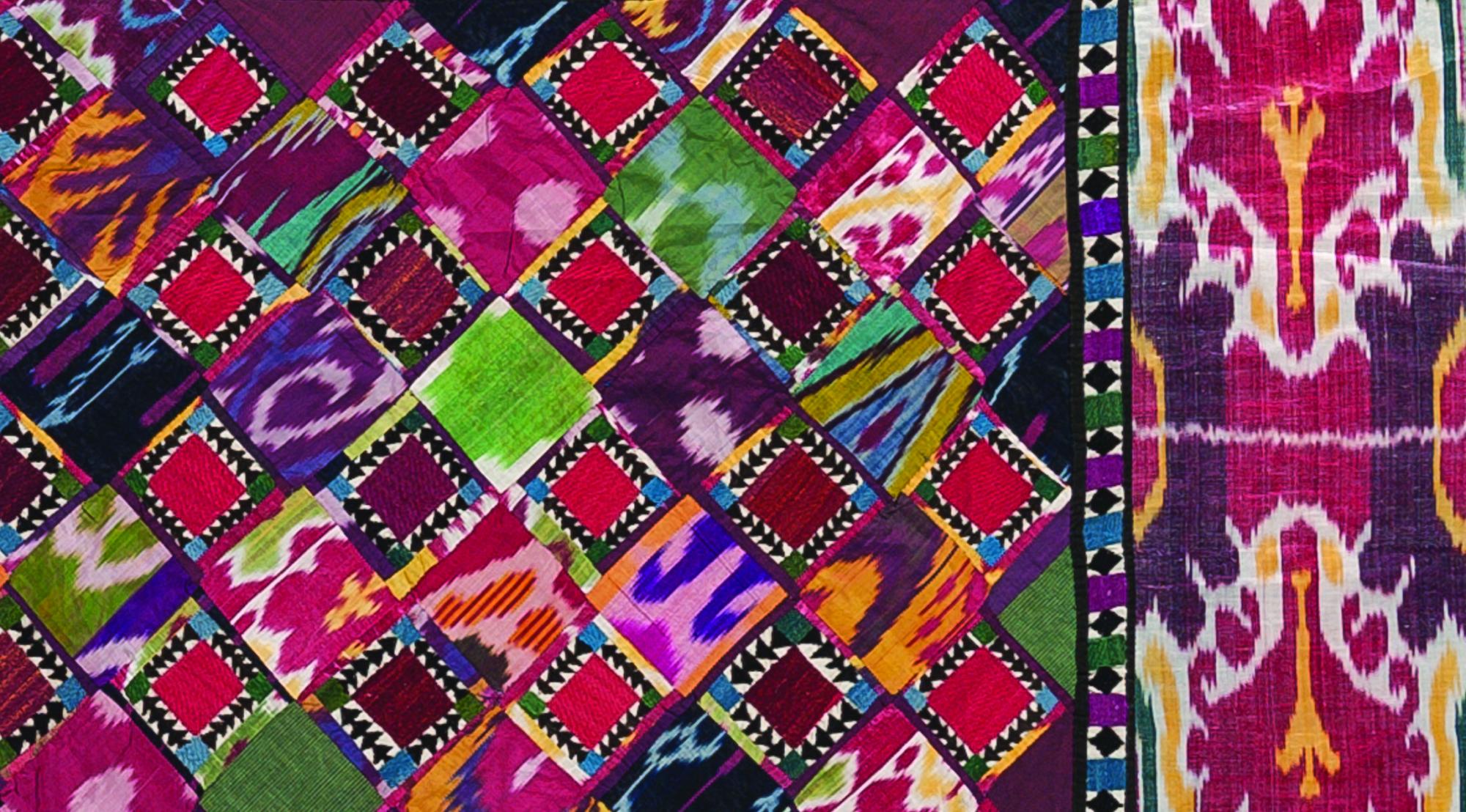
Sacred Scraps
May 12 - Dec. 16, 2017
Quilt and Patchwork Traditions of Central Asia.

Patchwork holds a special place in the folk art of Central Asia. In this region of diverse people, cultures, and landscapes, the act of sewing pieces of cloth together can be both sacred and commonplace. Everyday objects gain beauty through the display of plentiful fabrics, but they also acquire a mystical quality. Central Asians have long honored the power of talismans to guard against illness and malevolent spirits, fashioning protective amulets from patchwork and other textiles. As in other parts of the world, these meaningful objects help mark both momentous and mundane occasions in family and community life.
Explore the many forms—some novel, some familiar—that quilts and patchwork take in this vibrant part of the world.